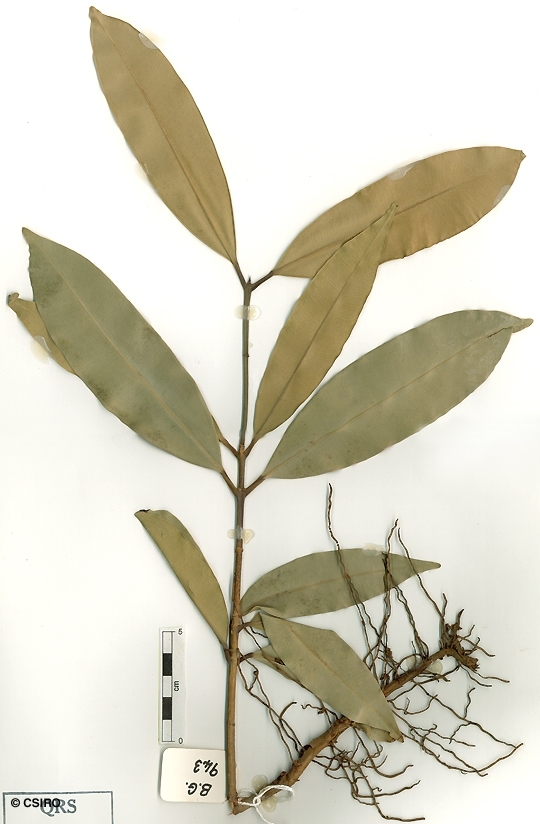Australian Tropical Rainforest Plants - Online edition
Mammea touriga (C.T.White & W.D.Francis) L.S.Sm.





Smith, L.S. (1959) Proc. Roy. Soc. Queensland 70: 27.
Touriga; Touriga, Brown; Brown Touriga; Alligatorbark
Exudate honey coloured and quite sticky.
Leaf blades about 13-20 x 4-7 cm. Petioles produce a milky exudate. Midrib raised on the upper surface and lateral veins forming loops inside the blade margin. Oil dots generally visible to the naked eye. Usually one oil dot per reticulation. Some streaky oil dots visible with a lens. Stipular scars usually numerous and obvious, encircling the twigs.
Inflorescence among or slightly back from the leaves. Flowers about 20-25 mm diam. Calyx completely fused at the flower bud stage enclosing the petals and other flower parts. Calyx splitting irregularly into two lobes each lobe about 5-7 mm diam. Petals +/- orbicular, about 9-15 mm diam., thick and fleshy, particularly towards the base (sometimes elliptic to obovate). Staminal filaments contorted in the bud.
Cataphylls triangular, about 3 mm long, initially alternate, subsequent cataphylls opposite. First pair of true leaves narrowly elliptic, with the midrib raised on the upper surface. Cataphylls also produced on the stem between pairs of true leaves. At the tenth leaf stage: leaf blade elongate-elliptic, apex acuminate, base cuneate, glabrous; oil dots large, irregular in shape, easily seen with the naked eye; lateral veins more than 30; petiole grooved or flat on the upper surface, glabrous. Exudate milky, copious. Seedling completely glabrous. Seed germination time 332 to 1211 days.
Fallen fruit eaten by Musky Rat-kangaroos. Cooper & Cooper (1994).
Once sought after for fence posts because of the ease of splitting and its long lasting qualities in the ground.
Wood specific gravity 0.96. Cause et al. (1989).





